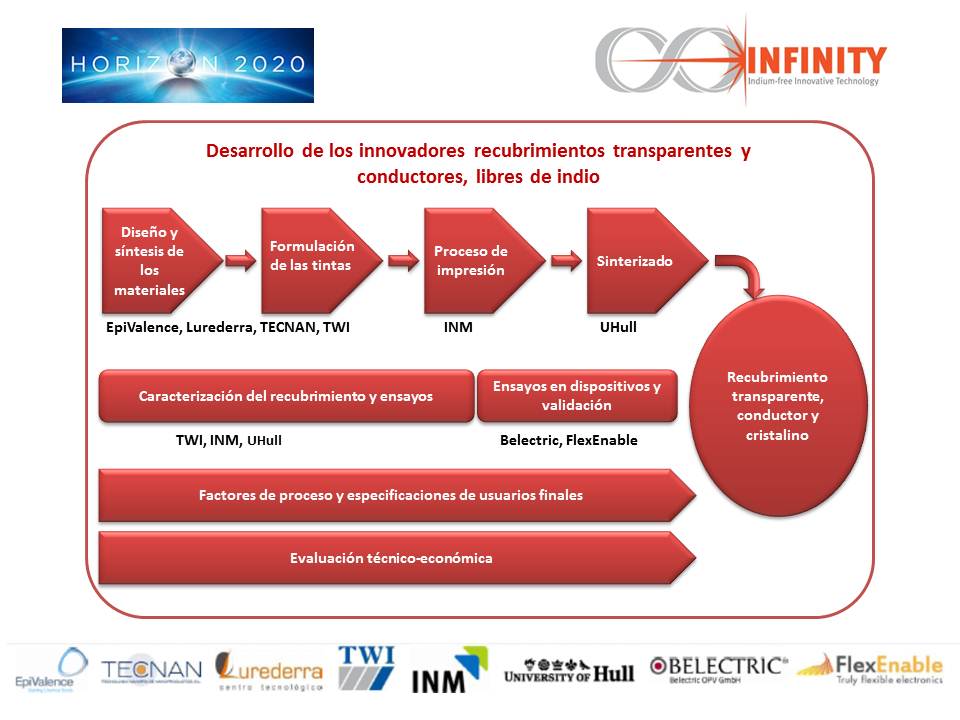The INFINITY project called “transparent coatings and conductors formed by free oxides of indium for plastic substrates and glassy” is focused on the development of novel inks capable of generating thin transparent coatings and drivers for application in various optoelectronic devices, such as photovoltaic cells , flat screens, etc. Currently, the most commonly used material in such applications is the mixed oxide of indium and tin (ITO), but the Indian is a rare element and quite expensive. In this context the INFINITY project appears, whose two main objectives are, firstly, to develop new coatings based on free oxides of indium with similar performance in terms of electrical conductivity and optical transmission coatings formed by ITO and on the other, applying these coatings by a process innovative direct and cost-effective printing.
To achieve these objectives, the project will develop new INFINITY inks doped with nanoparticles of two types of chemical compositions: silica doped oxide and titanium oxide doped with niobium oxide zinc. These nanomaterials will be synthesized by sol-gel method, using precursors with a very specific formulation. Subsequently, the inks will be modified and adapted to be applied by printing techniques such as gravure or ink-jet, which are direct, capable of minimizing waste generation and to generate multilayer coatings techniques. On the other hand, to allow the application of this vitreous coating on plastic substrates and, the sintering process of said nanoproduct will be carried out at low temperature, using a suitable laser. Therefore, the success of this project will allow the opening of such coatings to new applications ranging from solar panels to smart windows.
The INFINITY project lasts three years and is funded through research and innovation program Horizon 2020 of the European Commission. INFINITY has the best possible consortium for the development of their tasks, as it is formed by the best European experts in this field of research. To explain the approach to be followed during the development of the project the following scheme, where also the partner responsible for each stage is presented is shown.










